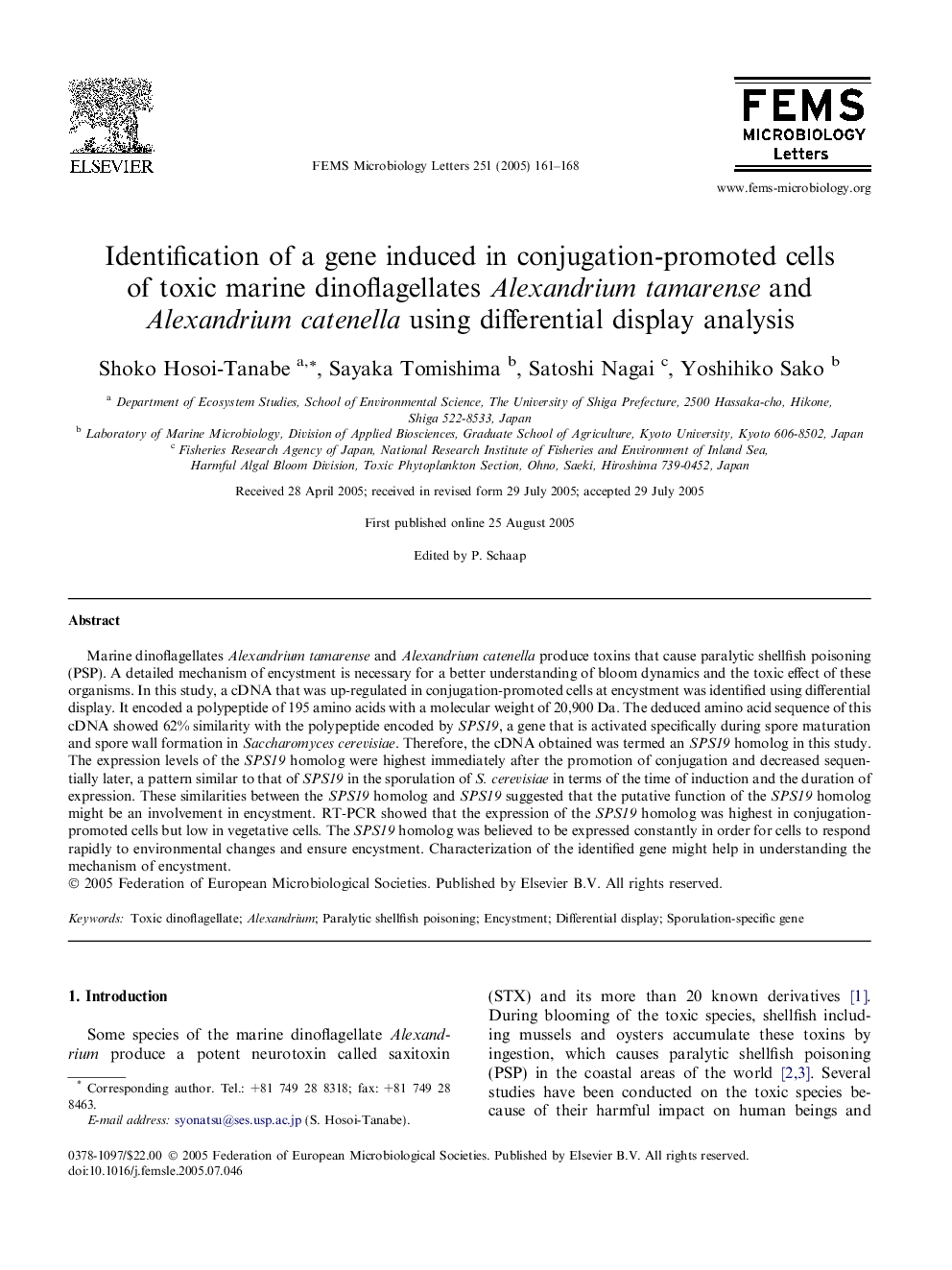| Article ID | Journal | Published Year | Pages | File Type |
|---|---|---|---|---|
| 9121426 | FEMS Microbiology Letters | 2005 | 8 Pages |
Abstract
Marine dinoflagellates Alexandrium tamarense and Alexandrium catenella produce toxins that cause paralytic shellfish poisoning (PSP). A detailed mechanism of encystment is necessary for a better understanding of bloom dynamics and the toxic effect of these organisms. In this study, a cDNA that was up-regulated in conjugation-promoted cells at encystment was identified using differential display. It encoded a polypeptide of 195 amino acids with a molecular weight of 20,900Â Da. The deduced amino acid sequence of this cDNA showed 62% similarity with the polypeptide encoded by SPS19, a gene that is activated specifically during spore maturation and spore wall formation in Saccharomyces cerevisiae. Therefore, the cDNA obtained was termed an SPS19 homolog in this study. The expression levels of the SPS19 homolog were highest immediately after the promotion of conjugation and decreased sequentially later, a pattern similar to that of SPS19 in the sporulation of S. cerevisiae in terms of the time of induction and the duration of expression. These similarities between the SPS19 homolog and SPS19 suggested that the putative function of the SPS19 homolog might be an involvement in encystment. RT-PCR showed that the expression of the SPS19 homolog was highest in conjugation-promoted cells but low in vegetative cells. The SPS19 homolog was believed to be expressed constantly in order for cells to respond rapidly to environmental changes and ensure encystment. Characterization of the identified gene might help in understanding the mechanism of encystment.
Related Topics
Life Sciences
Biochemistry, Genetics and Molecular Biology
Genetics
Authors
Shoko Hosoi-Tanabe, Sayaka Tomishima, Satoshi Nagai, Yoshihiko Sako,
